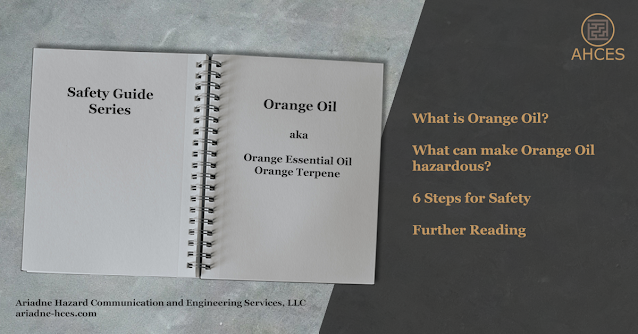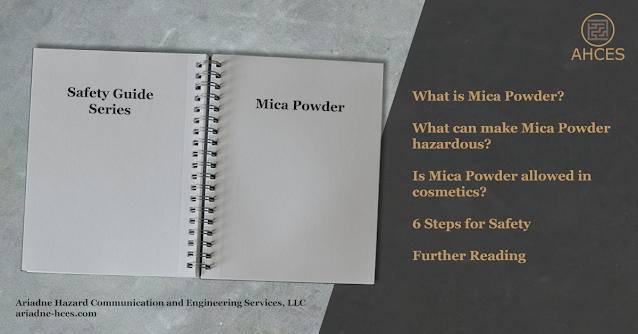Ferric Chloride Safety Guide
What is Ferric Chloride?
Ferric Chloride, also known as iron(III) chloride, is an inorganic compound. It can be readily found in anhydrous (dry) and hydrous (wet) forms, as well as an aqueous solution.
Ferric chloride has many uses, including as an agent in water purification and sewage treatment, an etching agent for the production of circuit boards, and as a reagent for other chemical manufacturing.
Ferric chloride has the CAS Number 7705-08-0.
Notable Properties of Ferric Chloride
In solid, crystalline form, anhydrous ferric chloride is brown-black in color and the most common hexahydrate form is orange to yellow in color. In aqueous solution, ferric chloride is brown.
What Makes Ferric Chloride Hazardous?
Ferric chloride in all forms is acidic. This makes ferric chloride corrosive and an irritant, capable of causing serious irritation and potential burns to the skin and eyes. Breathing in ferric chloride dust or vapors can cause irritation to the respiratory system. Additionally, ferric chloride is corrosive to metals such as aluminum when wet, so proper storage is necessary to prevent accident leaks.
Ferric chloride can be harmful to the environment, having potential for long term harm to aquatic environments.
Though ferric chloride is inorganic and cannot act as a fuel source in a fire, it can still decompose into hazardous components in high temperatures, including chloride gas.
Ferric Chloride Frequently Asked Questions
What can ferric chloride etching be used on?
Ferric chloride can be used to etch steel, stainless steel, copper, brass, and other metals. It is possible to use ferric chloride to etch aluminum, but only milder solutions of ferric chloride should be used due to the reaction between ferric chloride and aluminum giving off heat.
6 Steps for Safety
Step 1: Read the Warnings
When working with a product for the first time, always read all the safety documents first. This includes safety data sheets, which should be provided by the manufacturer or importer of the geraniol product. There may also be an OSHA chemical label or a Consumer Protection label on the packaging of the ferric chloride containing product. These documents all contain important information on the hazards of the product and instructions on how to mitigate those hazards.
Note that different products which contain ferric chloride can have different safety considerations depending on other ingredients and the relative concentrations of those ingredients.
Step 2: Prepare Your Workspace
Creating a safe workspace, sometimes referred to as engineering control, is a key component of working safely with any potentially hazardous substance.
Ferric chloride can be worked with both as a solid crystalline substance, which can have dust related hazards, and as an aqueous solution, which can have liquid splash related hazards.
For dust hazards, a dust collection system which can filter out any small inorganic particles is important. This prevents respiratory harm caused by breathing in a corrosive substance.
Step 3: Gather Your PPE
When working with ferric chloride, the following PPE is recommended. The exact PPE will vary depending on the workplace setup and the form the ferric chloride is in. Other hazardous chemicals in the workplace may necessitate additional PPE.
- Eye Protection
- Safety goggles which form a protective seal around the eyes can be used to prevent ferric chloride dust from reaching the eyes.
- Respiratory Protection
- Particularly with activities that are likely to cause airborne dust, such as powdering or pouring large quantities from one container to another, a respirator with an appropriately rated filter for inorganic substances is recommended to prevent inhalation.
- Gloves
- Basic disposable gloves, or other rubberized gloves, will prevent ferric chloride from touching the skin on the hands and causing irritation.
- Body Covering
- A rubberized apron or other body covering should be worn to prevent liquid splashes from contacting the clothing.
- Closed Toe Shoes
- Closed toed shoes with a solid top (not tennis shoes) should be worn to prevent liquid contact with the feet.
Step 4: Clear Your Workspace
Having a clear workspace is important for safety as it can prevent accidents caused by tripping, as well as allowing you to easily spot any spills.
This is also a good time to ensure all engineering controls are functional. This includes any dust collection systems and appropriate ventilation.
Step 5: Do The Work
If engineering controls and PPE are used properly, working with ferric chloride can be done safely. Particular care should be taken if ferric chloride is being used with aluminum for etching due to the exothermic reaction that takes place.
If work cannot be completed in one sitting, be sure to properly seal any ferric chloride containers to prevent spills or accidental release when not in use.
Step 6: Clean Up
Clean up ferric chloride spills by first covering with a non-combustible material, such as sand, and sweep up.
Since ferric chloride can be hazardous to the environment, take extra care that none is released into the water system, including large quantities being flushed down municipal drainage systems.
Be sure to dispose of any waste in accordance with local regulations.
Further Reading
The National Library of Medicine has a PubChem article on Ferric Chloride.
Check out the Safety Guide Series Hub for more safety guides.
Sources Cited
Chemcut (2021, December 1). Dos & Don'ts Of Ferric Etching. https://www.chemcut.net/blog/6-ferric-dos-and-donts
National Center for Biotechnology Information (2025). PubChem Annotation Record for , FERRIC CHLORIDE, Source: Hazardous Substances Data Bank (HSDB). Retrieved March 25, 2025 from https://pubchem.ncbi.nlm.nih.gov/source/hsdb/449.
National Center for Biotechnology Information (2025). PubChem Compound Summary for CID 24380, Ferric Chloride. Retrieved March 25, 2025 from https://pubchem.ncbi.nlm.nih.gov/compound/24380.
National Oceanic and Atmospheric Administration (n.d.).
FERRIC CHLORIDE. CAMEO Chemicals. Retrieved March 25,
2025, from https://cameochemicals.noaa.gov/chemical/8680




Comments
Post a Comment